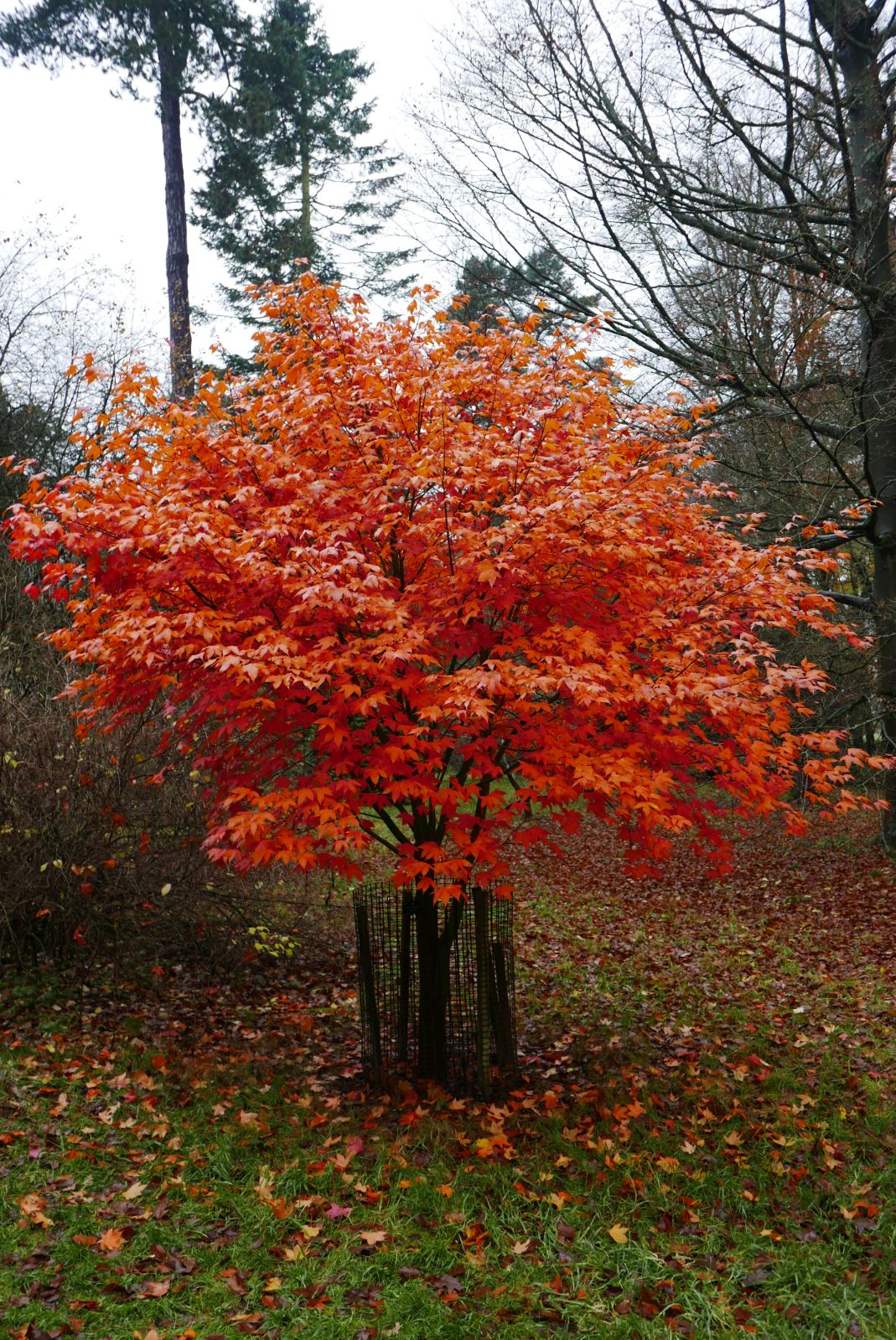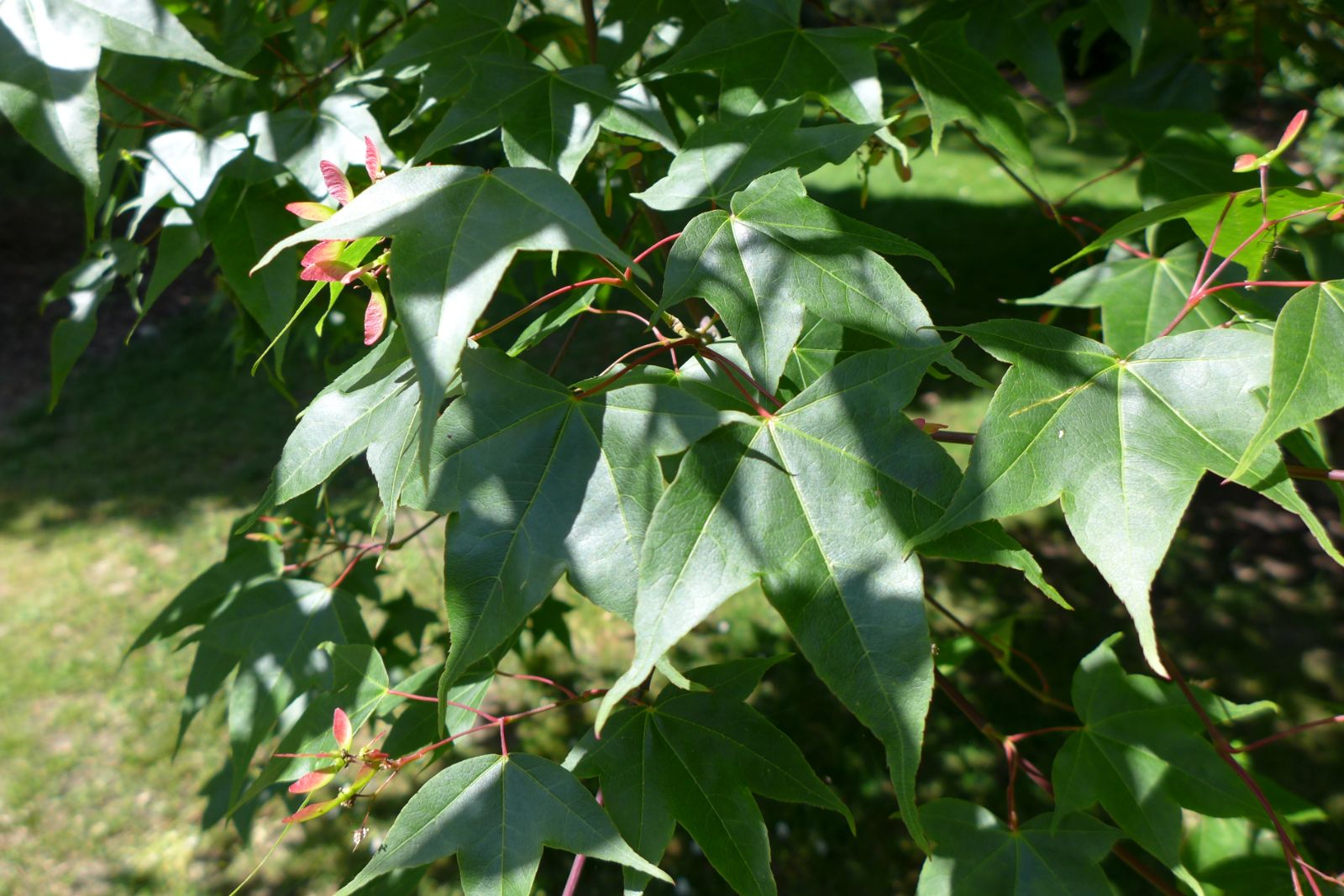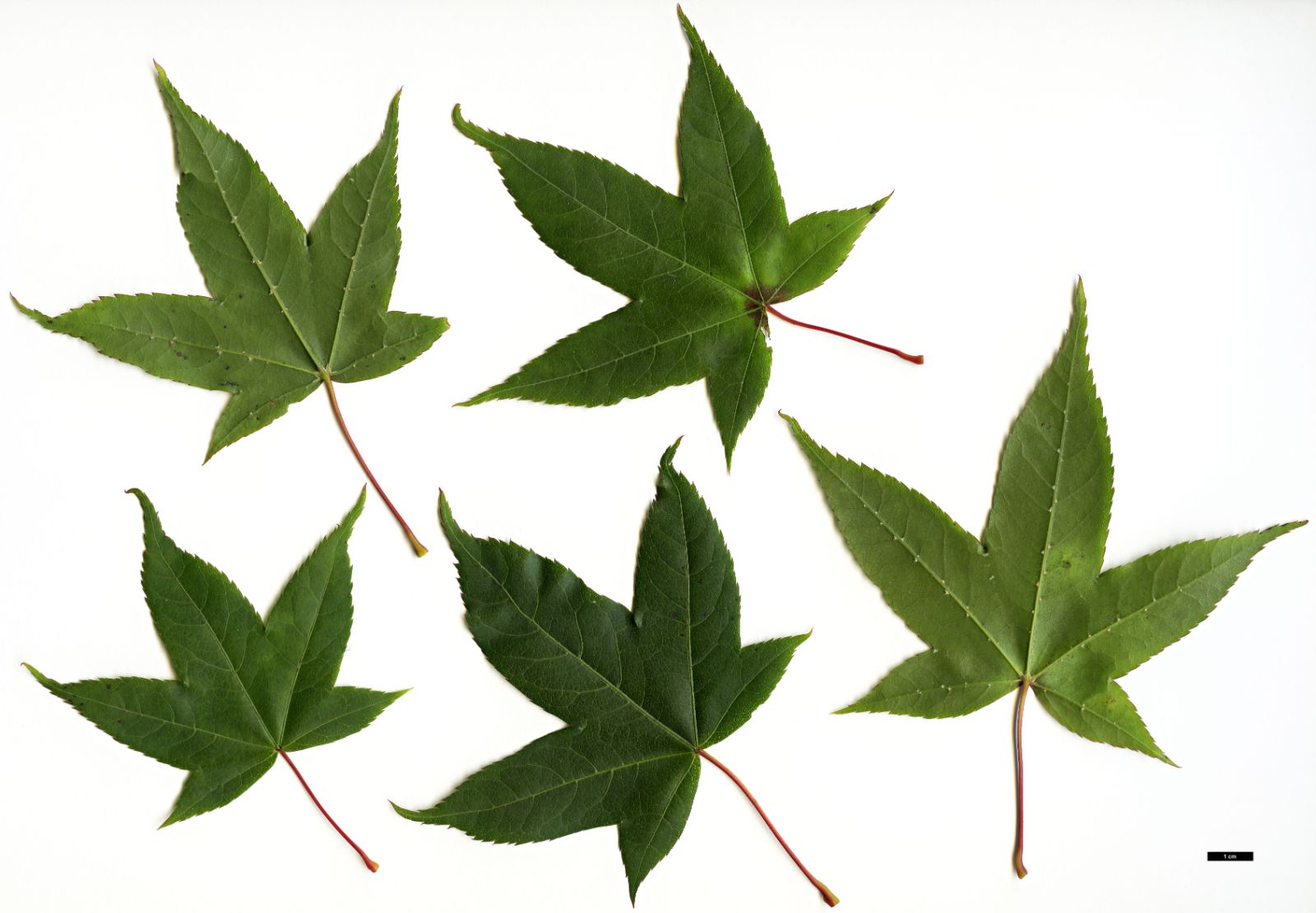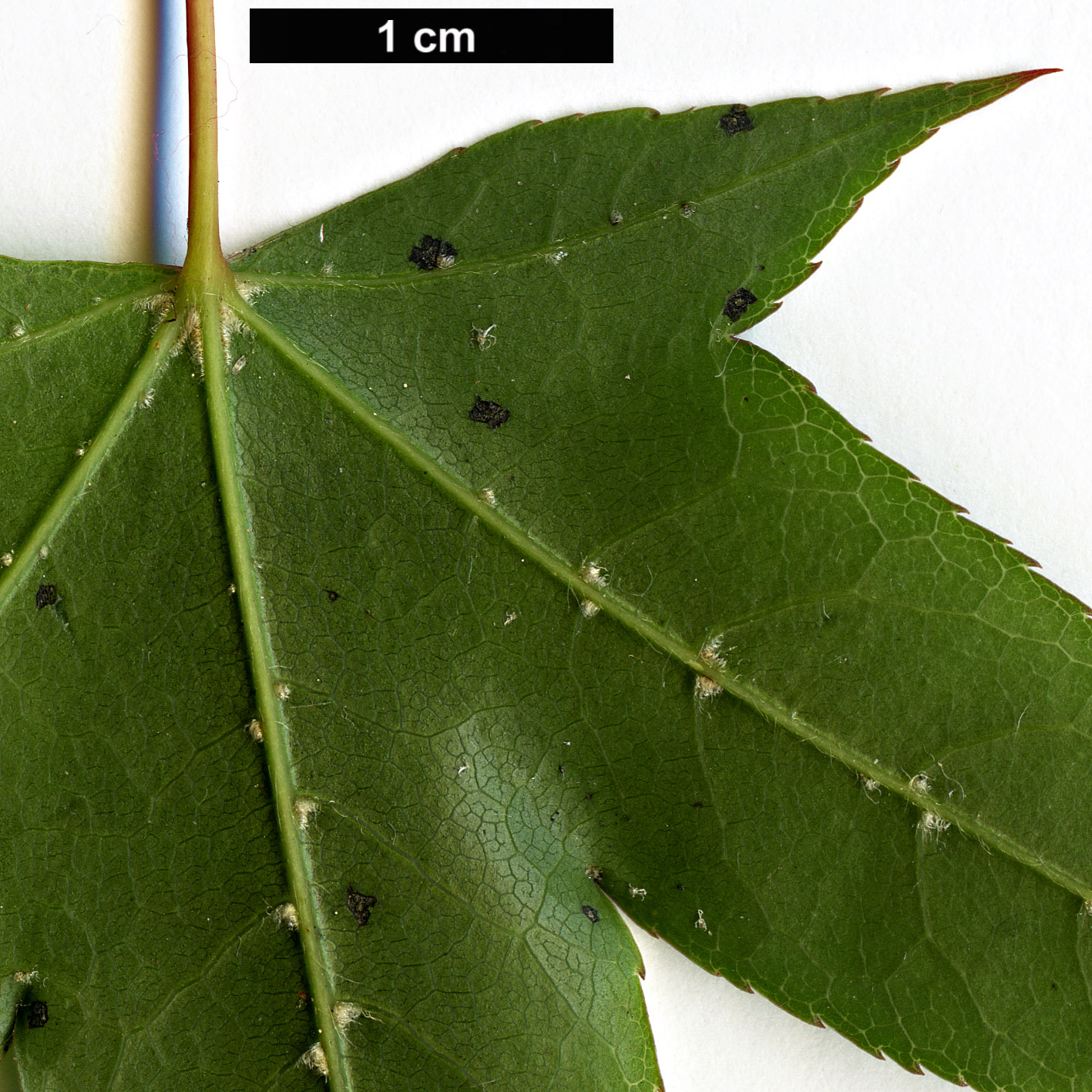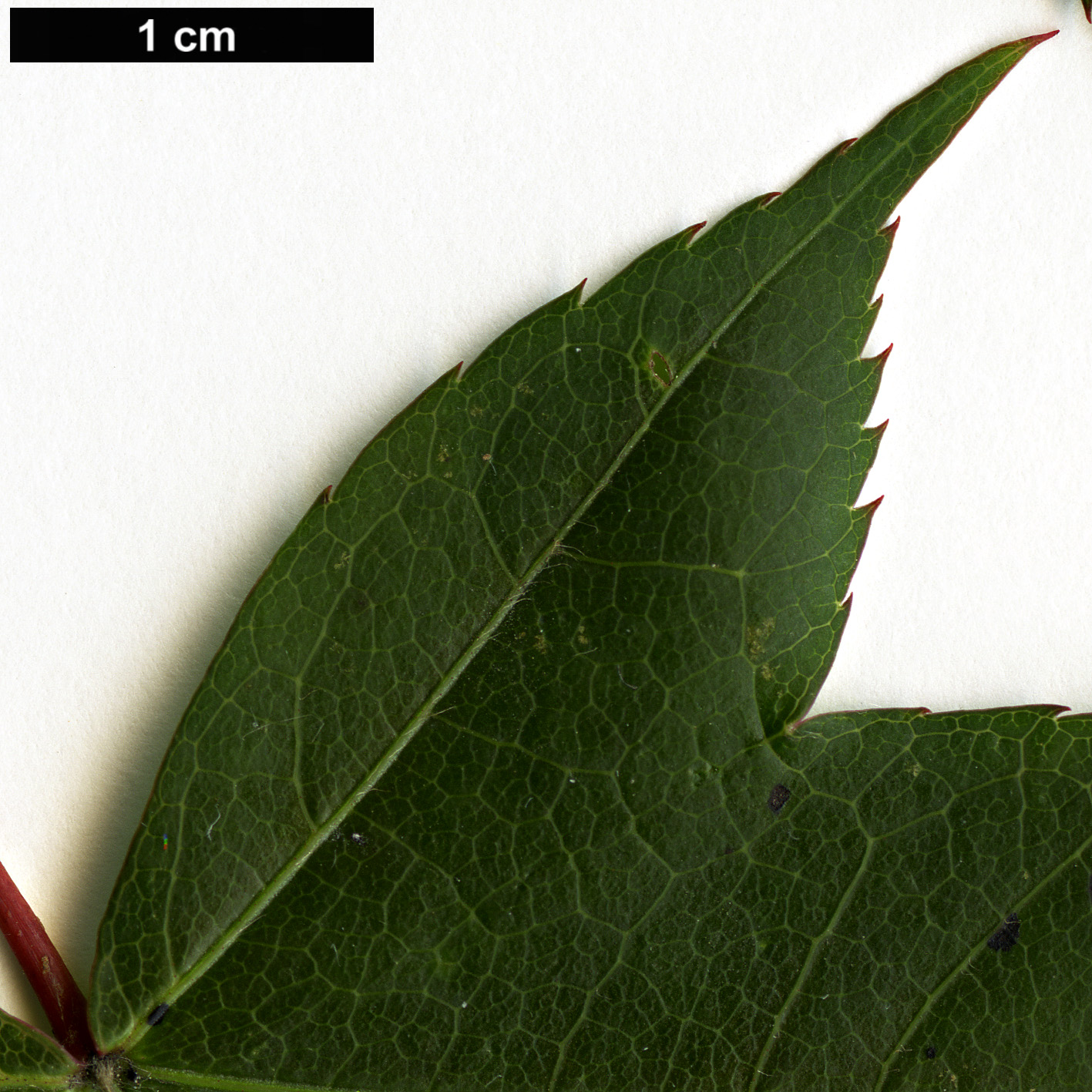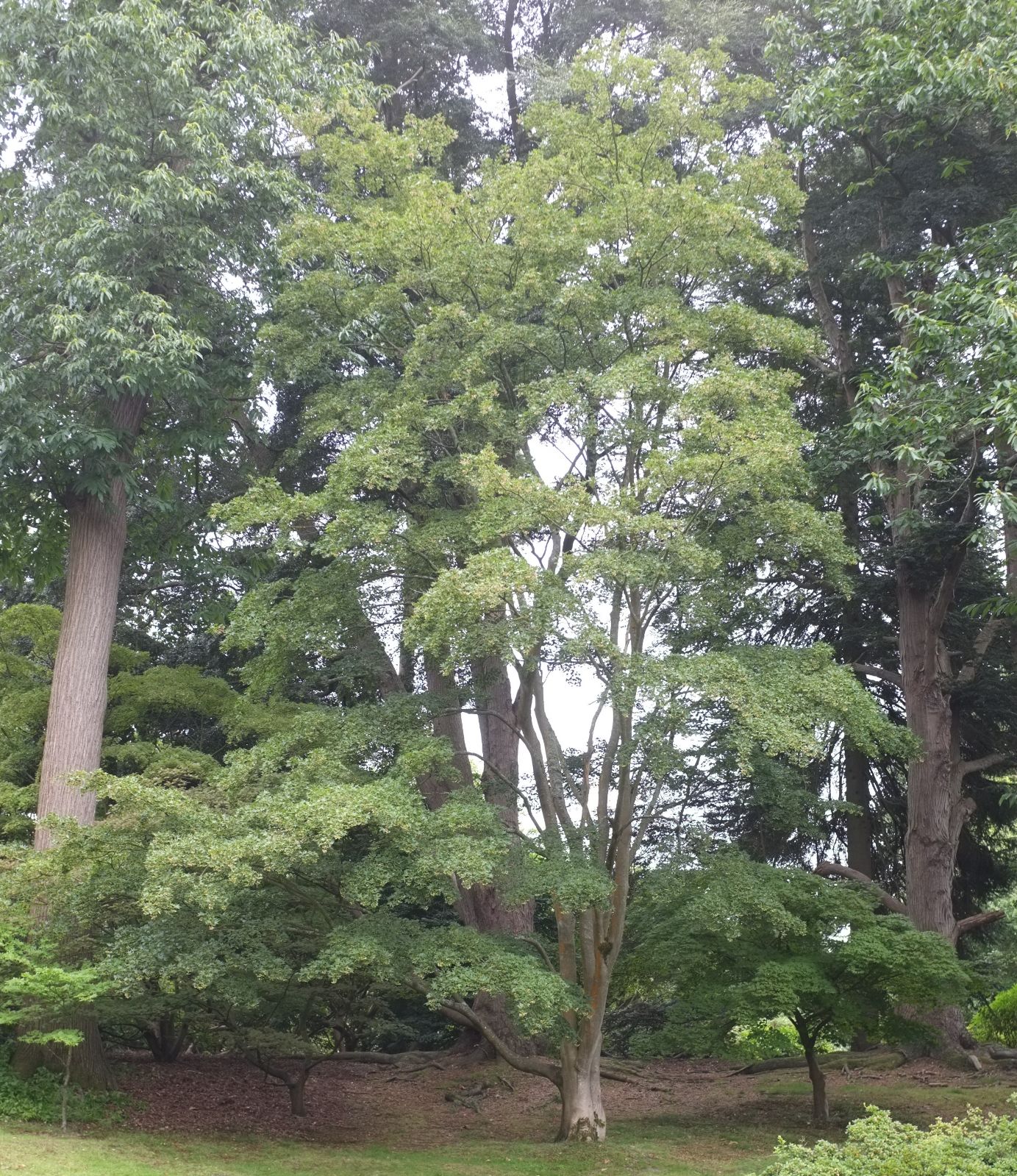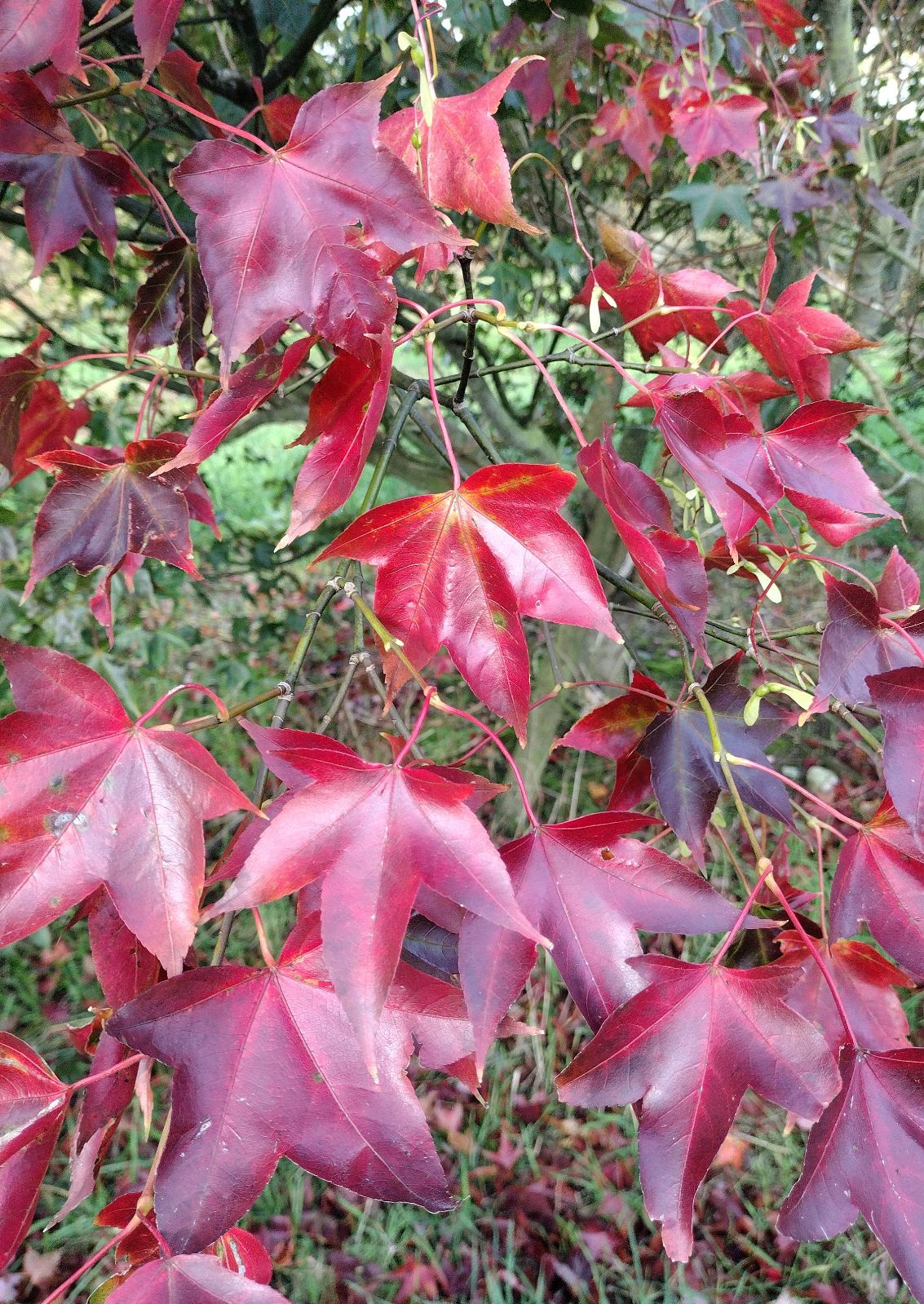Acer oliverianum
Sponsor
Kindly sponsored by
Lawrence Banks
Credits
John Grimshaw, Ross Bayton & Dan Crowley (2020)
Recommended citation
Grimshaw, J., Bayton, R. & Crowley, D. (2020), 'Acer oliverianum' from the website Trees and Shrubs Online (treesandshrubsonline.
Genus
- Acer
- Sect. Palmata, Ser. Sinensia
Common Names
- Oliver's Maple
Synonyms
- Acer campbellii subsp. oliverianum (Pax) E. Murray
- Acer schneiderianum Pax & K. Hoffmann
- Acer campbellii subsp. schneiderianum (Pax & K. Hoffmann) A.E. Murray
- Acer lanpingense W.P. Fang & M.Y. Fang
Other taxa in genus
- Acer acuminatum
- Acer amplum
- Acer argutum
- Acer barbinerve
- Acer buergerianum
- Acer caesium
- Acer calcaratum
- Acer campbellii
- Acer campestre
- Acer 'Candy Stripe'
- Acer capillipes
- Acer cappadocicum
- Acer carpinifolium
- Acer 'Cascade'
- Acer caudatum
- Acer ceriferum
- Acer chapaense
- Acer chienii
- Acer circinatum
- Acer cissifolium
- Acer × conspicuum
- Acer cordatum
- Acer coriaceifolium
- Acer × coriaceum
- Acer crataegifolium
- Acer davidii
- Acer diabolicum
- Acer distylum
- Acer divergens
- Acer duplicatoserratum
- Acer elegantulum
- Acer erianthum
- Acer 'Esk Flamingo'
- Acer fargesii
- Acer fenzelianum
- Acer flabellatum
- Acer forrestii
- Acer franchetii
- Acer × freemanii
- Acer fulvescens
- Acer 'Gimborn'
- Acer ginnala
- Acer glabrum
- Acer 'Gold Coin'
- Acer granatense
- Acer grandidentatum
- Acer griseum
- Acer heldreichii
- Acer henryi
- Acer × hillieri
- Acer hookeri
- Acer hyrcanum
- Acer japonicum
- Acer kawakamii
- Acer komarovii
- Acer laevigatum
- Acer laurinum
- Acer laxiflorum
- Acer lobelii
- Acer longipes
- Acer macrophyllum
- Acer mandshuricum
- Acer maximowiczianum
- Acer maximowiczii
- Acer metcalfii
- Acer miaotaiense
- Acer micranthum
- Acer 'Mindavi'
- Acer 'Minorient'
- Acer miyabei
- Acer miyabei × campestre
- Acer monspessulanum
- Acer morifolium
- Acer 'Mozart'
- Acer oblongum
- Acer obtusifolium
- Acer okamotoanum
- Acer opalus
- Acer orientale
- Acer palmatum
- Acer papilio
- Acer pauciflorum
- Acer pectinatum
- Acer pensylvanicum
- Acer pentaphyllum
- Acer pentapotamicum
- Acer pictum
- Acer pilosum
- Acer pinnatinervium
- Acer platanoides
- Acer platanoides × amplum
- Acer platanoides × truncatum
- Acer × pseudoheldreichii
- Acer pseudoplatanus
- Acer pseudosieboldianum
- Acer pubinerve
- Acer pycnanthum
- Acer rubescens
- Acer rubrum
- Acer rufinerve
- Acer saccharinum
- Acer saccharum
- Acer sempervirens
- Acer 'Serpentine'
- Acer serrulatum
- Acer shenkanense
- Acer sieboldianum
- Acer sikkimense
- Acer 'Silver Cardinal'
- Acer 'Silver Ghost'
- Acer sinense
- Acer sinopurpurascens
- Acer spicatum
- Acer stachyophyllum
- Acer taronense
- Acer tataricum
- Acer tegmentosum
- Acer tenellum
- Acer tetramerum
- Acer tibetense
- Acer tonkinense
- Acer triflorum
- Acer truncatum
- Acer tschonoskii
- Acer turkestanicum
- Acer tutcheri
- Acer ukurunduense
- Acer velutinum
- Acer wardii
- Acer 'White Tigress'
- Acer wilsonii
- Acer × zoeschense
A deciduous tree usually to 10 m, rarely taller. Bark greyish-brown, smooth. Branchlets glabrous, purplish-red or greenish, sometimes bloomed, turning darker. Buds ovoid, with 4 pairs of scales. Leaves broadly pentagonal in outline, base subcordate to truncate, 3– to 5-lobed, 5–8 × 5–9 cm, lobes apically acute or acuminate, margins sharply serrulate, upper surface mid-green, lower surface glossy green, glabrous except for tufts in vein axils; petiole 2.5–6 cm long, red or green, glabrous, autumn colours yellow to orange. Inflorescence, terminal, corymbose. Flowers 5-merous, usually dioecious, pedicels long and slender, sepals and petals oblong to broadly ovate, sepals red, petals white, petals as long as sepals, stamens 8, inserted inside the nectar disc. Samaras 2.5–3.5 cm long, wings spreading nearly horizontally. Nutlets ovoid. Flowering in May, with unfolding leaves, fruiting in October. (van Gelderen et al. 1994; Xu et al. 2008).
Distribution China Anhui, Fujian, southern Gansu, Guizhou, southern Henan, western Hubei, Hunan, Jiangxi, southern Shaanxi, Sichuan, Yunnan, Zhejiang Taiwan Central and northern regions
Habitat Forests and valleys between 1000 and 2000 m asl.
USDA Hardiness Zone 6-7
RHS Hardiness Rating H5
Conservation status Least concern (LC)
Taxonomic note Acer schneiderianum was treated as distinct from A. oliverianum by van Gelderen et al. (1994), a view followed by Grimshaw & Bayton (2009). The former authors acknowledged, however, that only limited material was available for study, and that the taxon may become synonymous with A. campbellii, rather than being allied to A. oliverianum. This was perhaps due A. schneiderianum being treated as a subspecies of A. campbellii by Murray, who likely also had very limited material available for study. However, Xu et al. (2008) treat A. schneiderianum as synonymous with A. oliverianum, an opinion followed here, with characters of inflorescence and foliage of the two consistent with one another. The Taiwanese endemic sometimes treated as A. oliverianum subsp. formosanum is here treated at species rank as A. serrulatum following Xu et al. (2008).
Named for Daniel Oliver, former Keeper of the library and herbarium at RBG Kew, A. oliverianum was first introduced by Wilson in 1901, collected on his first expedition for Veitch Nurseries (Bean 1976a). As observed on herbarium material foliage of his 1907 collection, W. 1936, made while collecting for the Arnold Arboretum, bears resemblance to that of some of the largest trees known in cultivation, that of mature examples at Westonbirt Arboretum, Gloucestershire and in the Valley Gardens, Windsor Great Park. These bear three-, four- and five-lobed leaves, a character that the species is known for, though not all examples exhibit four lobed leaves. The tree at Westonbirt, measured at 13 m tall in 2014 (The Tree Register 2018) is the UK and Ireland Champion and though speculated to be derived from a Wilson collection, this remains unproved and seemingly unprovable. It has a spreading crown though is largely one sided, having grown adjacent to a, now removed, Chamaecyparis lawsoniana of significant dimensions for most of its life.
Several recent introductions of the species have been made, including those circulated under the name of Acer schneiderianum. These include SICH 1214, collected in November 1992 at 2390 m in Zhaojue County, Sichuan. Here the parent trees of up to 8 m in height grew in a rich community of broadleaved trees on a north-facing slope. Good specimens are established at Wakehurst Place and in Giles Coode-Adams’ arboretum at Feeringbury Manor, Essex, the latter being the larger tree, at 9 m in 2019 (O. Johnson, pers. comm. 2019). This collection also grows well at the David C. Lam Asian Garden, Vancouver. There have also been more recent commercial introductions, and the species is offered by specialist nurseries in Europe. Such an example grows at Westonbirt and has formed an attractive, rounded crown, colouring a good orange in late autumn. A plant observed at Hergest Croft has an attractive ‘pewtered’ cast to the mature leaves in summer. This plant originated as seed imported from China by Andrew Norfield – one of several Chinese species introduced to a wider market by his nursery. Based on plants at RBG Kew and Westonbirt, the widely distributed Ogisu 95089, collected in 1995 in Xichang, Sichuan and included by Grimshaw & Bayton (2009) under A. schneiderianum, more accurately belongs to the A. flabellatum affinity (pers. obs. 2018, 2020).
Other introductions include SICH 2393, collected on the final SICH expedition in 2003, at 1680 m in Jiuzhaigou County, Sichuan. This too was made in rich forests on a north-facing slope, on rocky, sandstone soils. This was found in collections by Erskine (2012) growing as A. sinense (or A. campbellii subsp. sinense), though belongs to A. oliverianum. Similarly, SABE 1805, collected in 1980 from the Shennongjia Forest District, Hubei, is grown in some American collections as A. sinense, though also belongs here, as determined by Yousheng Chen from material at the Harvard University Herbarium. Several other collections have been made by American-led expeditions, including QLG 149 and 245, collected in 2006, the former from Liuba County, Shaanxi, the latter from Tian Shui City District, Gansu. Examples of both grow at the Morris Arboretum, Philadelphia, Quarryhill Botanical Garden, California and the United States National Arboretum, Washington D.C. (American Public Gardens Association 2017).

